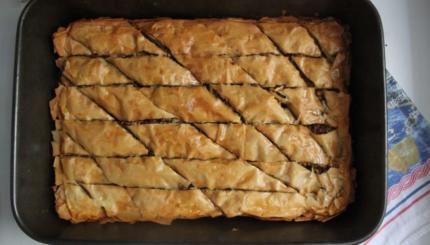While ostensibly living as a “New Christian,” a Jew who converted to Catholicism, Trevino continued covertly to observe the rituals of Judaism. According to the transcript of Trevino?s trial, in the final hours before his execution Trevino asserted, “he was a Jew and…resolved to live and die [according to] the Law of Moses.” Because he would not recant, he was denied the mercy of a quick death before the fire was lit. Instead, Trevino suffered a slow, agonizing death in the flames.
Trevino was one of hundreds of crypto-Jews arrested and tried by the Holy Office of the Inquisition in the Spanish and Portuguese colonies in the New World, which then comprised almost all of Central and South America and portions of North America. The Inquisition arrived in the New World in the mid-1500s and continued to operate until the late 1700’s.
The Inquisition was part of Spanish and Portuguese state policy. European sovereigns demanded that their subjects adhere loyally to their own their own state-sponsored religions there were few if any voices advocating for separation of church and state. In the 1490’s, Spain officially expelled all Jews, Moslems and other non-Catholics who would not convert to Catholicism. Anyone who could not prove that he or she was descended from generations of loyal, practicing Catholics was banned from settling in the American colonies. Nonetheless, some Jews living as Catholics probably managed to settle in America as early as 1499. By the mid-1600s, many crypto-Jews like Trevino were able to immigrate to America, where they hoped to lead somewhat freer lives.
Trevino was born in Spain in 1592. His Jewish mother, though a “New Catholic” convert, taught her children the rituals and ceremonies of Judaism. In 1611, when the Inquisition began to ferret out secretly practicing Jews in his village, Trevino fled to the New World. He left just in time. His family shortly thereafter came under suspicion and in 1623 his mother and elder brother were executed after a trial by an Inquisition board.
In New Spain (modern day Mexico), Trevino lived in several communities and became a successful merchant. He first ran afoul of the Mexican Inquisition in 1624, a year after his mother and brother were executed. Trevino was accused of violating Catholic doctrine. He admitted that his mother had taught him Jewish prayers and rituals as a child, but asserted that those things were behind him. He convinced the tribunal that, as an adult, he had not strayed from the teachings of the Catholic Church, which he willingly embraced. Trevino averred that he wanted only to continue to live in Mexico as a loyal Spanish subject. Despite these assurances, the tribunal convicted Trevino. His property was confiscated; he was fined, ordered to perform various religious penances and imprisoned. After a brief sojourn in confinement, the tribunal declared Trevino rehabilitated and released him.
Undeterred by his experience with Inquisitional wrath, in 1629 Trevino married the pious daughter of a New Christian family that was as observant of Judaism as conditions allowed. For the next several years, Trevino and his wife lived in Guadalajara. Although they continued to attend Catholic Mass and took a number of other precautions to avoid arousing suspicion, the Trevinos raised their children as Jews, circumcised their son, fasted on Jewish holy days, observed dietary laws and performed other Jewish rituals and ceremonies. Trevino became a recognized leader of Guadalajara?s small and very secretive crypto-Jewish community.
For his courage, Trevino was rearrested and charged once again with heresy and apostasy. Convicted a second time, Trevino was sentenced to death. This time, his refusal to recant his Judaism cost him his life, but it established forever his place in American Jewish history.
Chapters in American Jewish History are provided by the American Jewish Historical Society, collecting, preserving, fostering scholarship and providing access to the continuity of Jewish life in America for more than 350 years (and counting). Visit www.ajhs.org.


